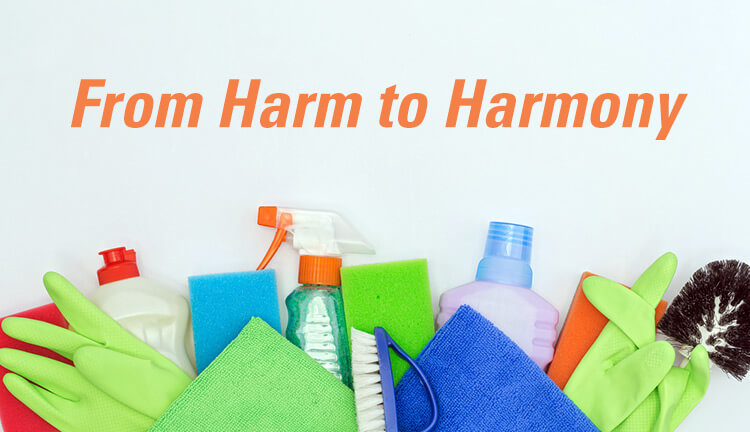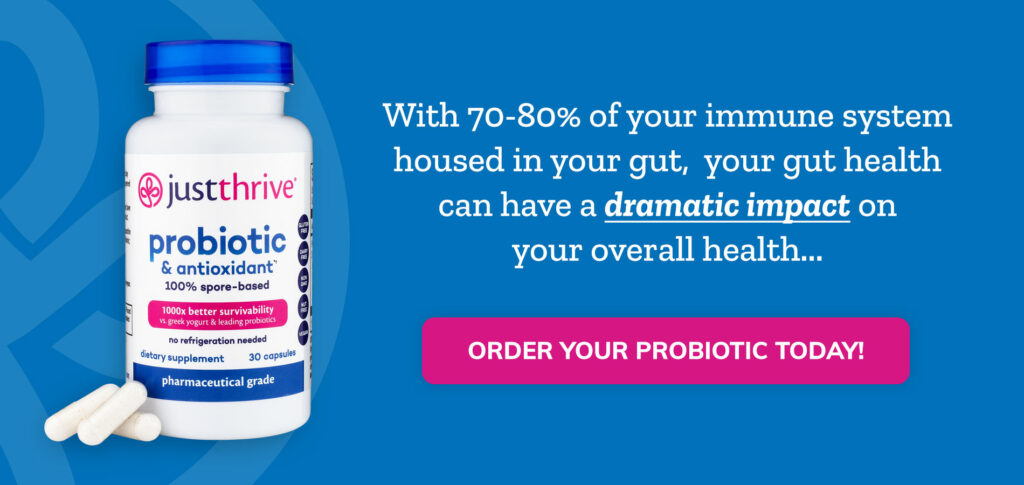Fresh paint. Window treatments. Stain-resistant couch. Plush wall-to-wall carpeting. What a fabulous place! Yet soon after moving in, you start sneezing. Then come the headaches. Fatigue. Joint pain. Brain fog…
You can be a non-smoker, organically oriented and fit, as I was, and still develop symptoms that mimic allergies and confound medical professionals. I’d unwittingly contributed to a chemically-laden house and furnishings by using conventional cleaning and personal care products: Drano unclogged the sink, Windex kept my mirrors shiny, Clorox removed bathroom mold. I also used chemically derived shampoos, conditioners and skin creams, polished my nails, spritzed on perfume.
Over time, the body just says, “Enough!”
Poisoned Planet
We’re living in a highly toxic world. The FDA has approved only a fraction of the chemicals in common use today. Air, water and soil pollution far exceed what our bodies are designed to handle. As a result, the toxins we’re unable to eliminate through our kidneys, bowel, liver, lungs and skin accumulate in our fatty tissue, where they can cause a bewildering array of seemingly unrelated symptoms.
New or remodeled homes exacerbate the problem. The EPA (Environmental Protection Agency) found that the levels of air pollution inside a home can be up to 100 times higher than the air outdoors. That’s a scary statistic.

Tox-Sick, the latest exposé by health and wellness advocate Suzanne Somers, explores toxicity and its potentially lethal effects, from weight gain and asthma to autism and cancer. Like me, Somers discovered that mainstream medicine doesn’t recognize or understand toxicity — and can make a bad situation worse by prescribing medication that masks symptoms and adds to your “body burden” (toxic load).
Fortunately, there are a number of simple steps you can take to reduce your toxic exposure and create a healthier home environment.
- Choose greener cleaners. A professional housecleaner once insisted he couldn’t get a house “really clean” with environmentally friendly products — and interpreted the headache he had at the end of each workday as the result of a job well done. Some gentler cleaning options that will protect your health:
- Bi-O-Kleen ammonia-free glass cleaner (instead of Windex)
- Bon Ami chlorine-free kitchen and bathroom cleanser (instead of Ajax or Comet)
- Seventh Generation Free and Clear laundry detergent (not Tide, or any brand with perfumes and dyes). Seventh Generation dish detergent is likewise a better choice than Dawn or Palmolive — despite those Madge-the-manicurist “You’re soaking in it!” TV commercials.
- Life Tree Homesoap: all-purpose, super concentrated household cleaner (instead of Lysol)
- Homemade cleaning alternatives: Our grandmothers cleaned with baking soda and white vinegar, which are effective for virtually any cleaning, disinfecting, or odor-removing task.
- Install a shower filter. Bathing in chlorinated water is as harmful as drinking it. In some communities the water is now being treated with chloramine: a combination of chlorine and ammonia (yeech!). You can buy a basic chlorine shower filter at most natural foods stores. One good model for a filter that removes chloramine is Vitashower.
- Clean heating & air conditioning ducts and replace filters. Mold builds up in moist, damp places and can cause respiratory difficulties, allergies, and illness.
- Explore an alternative to gas. Gas — natural gas and liquid propane — is a serious in-home pollutant. If you have another heating option (hot water baseboard, radiant, solar, electric), use it. In the kitchen, an open gas flame allows PICs (products of incomplete combustion) to waft through the house, and can cause headaches, mental confusion, and other symptoms. If you do use a gas range, be sure it’s properly ventilated.
- Skip the faux fragrance. Air “fresheners” (room deodorizers) attempt to mask odors by giving off their own chemical scent. In lieu of air fresheners, open a window, put out boxes of baking soda to absorb smells, or try diffusing essential oils into the room. (Diffusers and essential oils are available at most natural food stores, as well as herb shops).
- Remodel wisely. Petroleum-based paints, synthetic carpet, varnishes, glues, etc., can give off dangerous vapors for months or even years, and can cause symptoms of multiple chemical sensitivity. Use plant- and water-based products, and consider consulting an environmentally aware architect/green builder prior to purchasing materials. Forgo carpet for bare floors. If you need to step on something cozy, buy organic cotton throw rugs that can be hand- or machine-washed.
- Bring nature indoors. Houseplants help purify the air: they give off oxygen and absorb carbon dioxide. Some plants even detoxify specific chemicals. Areca palm removes xylene; Boston fern rids the home of formaldehyde (present in everything from particleboard furniture to permanent press fabrics); English ivy neutralizes benzene (from oven cleaners and furniture polish). Other “natural air filters” include peace lily, spider plants, golden pothos, philodendron, and aloe vera.
By following these seven tips, you’ll soon be breathing easier. Welcome home!

